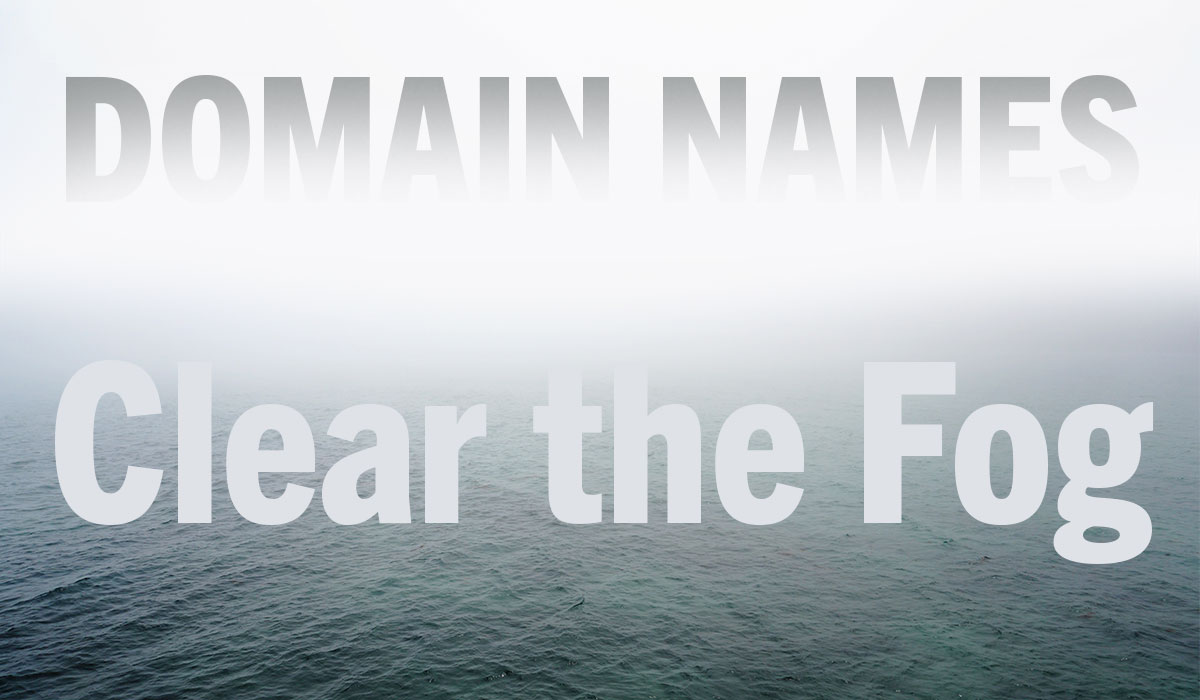
At Signalfire, we’ve designed and developed a great deal of successful websites – some even award winning! But since a website’s layout, color scheme, and navigation get all the glory, we’ve found that other vital pieces of the web development puzzle, such as your site’s domain name, are often overlooked.
A mysterious fog seems to have settled around domain name registration, website hosting, and DNS. These concepts are crucial to your new website’s functionality, so we’d like to clear things up!
In response, we’ve put together a few answers to questions our clients have frequently asked, so you can feel confident moving forward with your next website project. Let’s take a look!
WHAT IS A DOMAIN NAME?
Let’s start with the basics. A domain name (or web address) is the address where your website can be found online.
A domain name is how your browser finds your website. Companies, known as domain registrars, allow you to register or reserve a domain name.
A few examples of common domain registrars include GoDaddy, Network Solutions, 1and1.com, or Register.com. Typically, these companies charge between $5 and $20 per year to maintain your domain name. You can renew your domain name for anywhere from one to 99 years!
It’s critical for your company to know where your domain name is registered. In some cases, the web developer who built your company’s first website may still have control of your website’s domain name.
If you want to find out where your website name is registered, you can perform a WHOIS lookup. The Internet Corporation for Assigned Names and Numbers (ICANN) maintains a contact database that shows the name of the company or person the domain name is registered with, as well as the domain registrar and the expiration date of the domain.
WHAT’S THE DIFFERENCE BETWEEN MY DOMAIN NAME AND WEB HOSTING?
Having your domain name registered is like being listed in the white pages, but your website also needs a physical location, just as your business needs office space. Your website must be hosted on a server that is maintained by a website hosting company.
WHAT IF I FORGET TO RENEW MY DOMAIN NAME?
This can be a very complicated process, but it’s not hopeless. Don’t let this hold up your website planning. Give us a shout, and we’ll help you through the process. If you have more questions on this, please use this quick reference.
WHAT DOES DNS MEAN?
Now that you have a domain name and a website host, we need to connect the two. In order to do this, we use domain name servers (DNS). DNS are a series of entries that direct your email and website to the proper servers. They’re essentially the internet’s map connecting users to websites.
Without DNS, you would have to remember an IP address, such as 255.255.255.01, instead of a website name like www.example.com. DNS entries can also be used to validate services such as Google Analytics by proving that you are the owner of the domain.
The first step in setting up your DNS is configuring your name servers. You can use the default name servers provided by your domain registrar or you can point name servers at a server managed by your website hosting company. However, if you point your name servers at an external server, you will no longer be able to change your DNS settings.
COMMON TYPES OF DNS RECORDS:
- Address Mapping records (A) — The Record A specifies IP address (IPv4) for a given host. A records are used to convert domain names to corresponding IP addresses.
- IP Version 6 Address records (AAAA) — The record AAAA (Quad-A record) specifies IPv6 address for given host. It works the same way as the A record with the difference being the type of IP address it interacts with.
- Canonical Name records (CNAME) — The CNAME record specifies a domain name that has to be queried in order to resolve the original DNS query. Essentially, CNAME records are used for creating aliases of domain names. CNAME records are truly useful when you want to alias your domain to an external domain. In other cases, we can remove CNAME records and replace them with A records to decrease performance overhead.
- Mail exchanger record (MX) — The MX resource record specifies a mail exchange server for a DNS domain name. The information is used by Simple Mail Transfer Protocol (SMTP) to route emails to proper hosts. Typically, there are more than one mail exchange server for a DNS domain and each of them have set priority.
- Name Server records (NS) — The NS record specifies an authoritative name server for given host.
- Text records (TXT) — The text record can hold arbitrary non-formatted text strings. Typically, the record is used by Sender Policy Framework (SPF) to prevent fake emails to appear to be sent by you.
SHOULD I LET MY WEB DEVELOPER HANDLE MY DOMAIN NAME?
Absolutely not! You need to have access to your domain, and beware of developers who resist handing control over to you – after all, it’s your website. It’s best to keep your domain registered in your name.
We’ve seen far too many situations where a former developer goes out of business, is uncooperative, or even passes away. This leaves you, as a business owner, in a real bind without many good options for reclaiming your domain.
At Signalfire, we always make a point to partner with our clients to clarify and ensure domain name ownership remains with the business owners. This is something to keep in mind, when planning for your next website.
WOULD YOU LIKE TO LEARN MORE?
If you’re still a bit foggy or have a question we didn’t cover in this article, feel free to give us a call at 262-725-4500 or send us an email.
We’re happy to connect, learn more about your business/organization, and provide creative marketing solutions for your unique challenges. Reach out to Signalfire today!